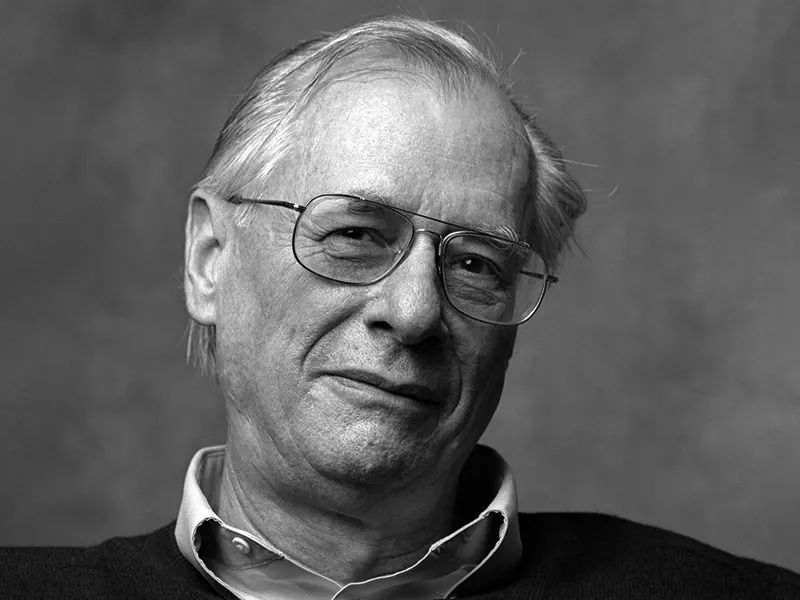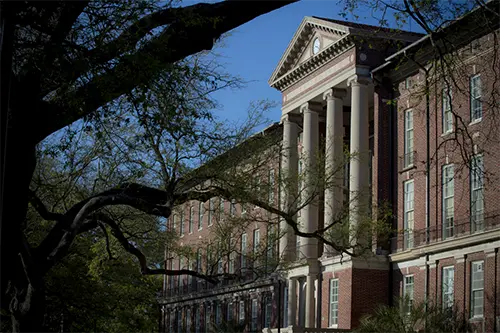
Biography
Professor William Craft Brumfield, recipient of a John Simon Guggenheim Memorial Fellowship (2000) and Fellow at the National Humanities Center in 1992-93, is Professor of Slavic studies and Sizeler Professor of Jewish Studies at Tulane University. In 2002, he was elected to the State Russian Academy of Architecture and Construction Sciences. In 2006, he was elected Honorary Fellow of the Russian Academy of the Fine Arts—the only American elected to two Russian state academies.
In 1973 Brumfield earned his Ph.D. in Slavic Languages (specializing in 19th-century Russian literature and history) at the University of California, Berkeley. He was assistant professor at Harvard University (1974-80) and has held visiting appointments at the Universities of Wisconsin (1973-74) and Virginia (1985-86). In 1997, he received the annual Faculty Research Award from the Faculty of Liberal Arts and Sciences at Tulane.
He is the author and photographer of a number of works on Russian architecture: Gold in Azure: One Thousand Years of Russian Architecture (Boston: David Godine, Publisher, 1983); The Origins of Modernism in Russian Architecture (Univ. of California Press, 1991); A History of Russian Architecture (Cambridge Univ. Press, 1993), which The New York Times Book Review included in its "Notable Books of the Year 1993"; Lost Russia: Photographing the Ruins of Russian Architecture (Duke Univ. Press, 1995); Landmarks of Russian Architecture: A Photographic Survey (Gordon and Breach Publishers, 1997); Architecture at the End of the Earth: Photographing the Russian North (Duke Univ. Press, 2015); Journeys through the Russian Empire (Duke Univ. Press, 2020); Russian Avant-garde through the Lens of William Brumfield (Tri Kvadrata, 2024); and From Forest to Steppe: The Russian Art of Building in Wood (Duke Univ. Press, 2025). He edited and contributed chapters to: Reshaping Russian Architecture: Western Technology, Utopian Dreams (Cambridge Univ. Press/Woodrow Wilson Center, 1990); Christianity and the Arts in Russia (Cambridge Univ. Press, 1991), and Russian Housing in the Modern Age: Design and Social History(Cambridge Univ. Press/Woodrow Wilson Center, 1993).
In 2000 the Moscow publishing house "Tri Kvadrata" began the publication in Russian of Brumfield's work, including the "Discovering Russia" series, sponsored by the Kennan Institute for Advanced Russian Studies at the Woodrow Wilson Center, Washington, DC. The fifteen volumes to date in this series include Totma: Architectural Heritage in Photographs (2005); Irkutsk: Architectural Heritage in Photographs (2006); Tobolsk: Architectural Heritage in Photographs (2006); Solikamsk: Architectural Heritage in Photographs (2007); Cherdyn: Architectural Heritage in Photographs (2007); Kargopol: Architectural Heritage in Photographs (2007); Chita: Architectural Heritage in Photographs (2008); Buriatiia: Architectural Heritage in Photographs (2008); Solovki: Architectural Heritage in Photographs (2008); Kolomna: Architectural Heritage in Photographs (2009); Suzdal: Architectural Heritage in Photographs (2009); Torzhok: Architectural Heritage in Photographs (2010); Usol'e: Architectural Heritage in Photographs (2012); Smolensk: Architectural Heritage in Photographs (2014); Chukhlomskii Region: Architectural Heritage in Photographs (2016). These volumes have English as well as Russian text. Brumfield has also published seven large volumes (text in Russian and English) on the architectural history of the Vologda territory: Vologda Album (2005); Velikii Ustiug (2007); Kirillov (2008); Ferapontovo (2009); Ustiuzhna (2010); Belozersk(2011); Vologda (2012); and Cherepovets (2017).
He has numerous other publications on Russian architecture, photography, and literature, including the literary monograph The Social Project in Russian Literature of the 19th Century (2009, in Russian). He has lectured frequently on the above topics at museums and universities in North America and in Europe. His photographs of Russian architecture, which have been exhibited at numerous galleries and museums, are part of the collection of the Department of Image Collections at the National Gallery of Art, Washington, D.C. https://www.nga.gov/research/library/image-collections/collections-photographers
His photographic exhibits include "The Russian Art of Building in Wood" (a traveling exhibit sponsored by the National Humanities Center), and "Lost Russia: Photographs by William Brumfield," which opened at the Duke University Museum of Art in January 1996, and appeared at the New Orleans Museum of Art (Nov. 1996-Feb. 1997), the University of Michigan Museum of Art, and other museums. In September 2016, his exhibit “Architecture at the End of the Earth: William Craft Brumfield’s Photographs of the Russian North” opened at the M.I.T. Wolk Gallery in the fall 2016 and subsequently traveled to the University of Washington, Seattle; Reed College; and The Museum of Russian Art, Minneapolis (2018). In Russia he has had major photographic exhibits at the Shchusev National Museum of Architecture (2001, 2023, 2024). In 2025 The Musuem of Russian Art opened his exhibit is Avant-garde Architecture of the Soviet Era: Photography by William Brumfield.
He has lived in Russia for a total of fifteen years and has done graduate and post-doctoral research at Moscow and Leningrad Universities (on IREX fellowships), as well as at the Russian Institute of Art History in Moscow. He co-directed the NEH Summer Institute for College and University Faculty "Moscow: Architecture and Art in Historical Perspective," held in Moscow during the summer of 1994, and has since conducted faculty summer seminars in various parts of Russia under the auspices of the Russian Institute of Art History.
For information on the new edition of Prof. Brumfield's standard work A History of Russian Architecture, please visit the University of Washington Press website.
William Craft Brumfield in the News
- William Brumfield receives Russian Order of Friendship Medal
- William Brumfield Russian Architecture Digital Collection
- Russian ‘Architecture at the End of the Earth’ draws American audience
- From Russia to MIT

